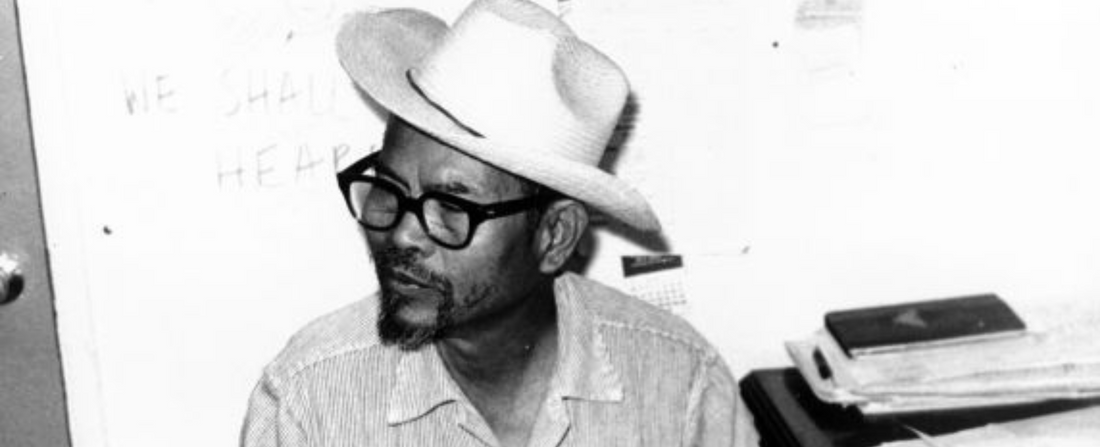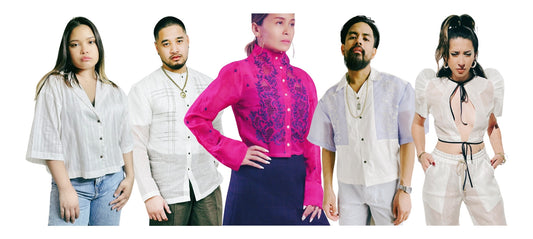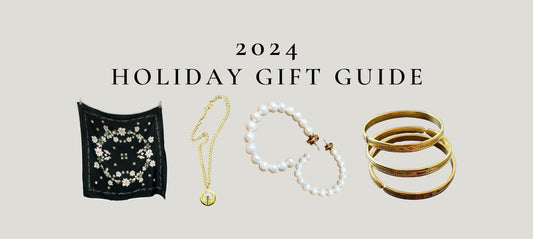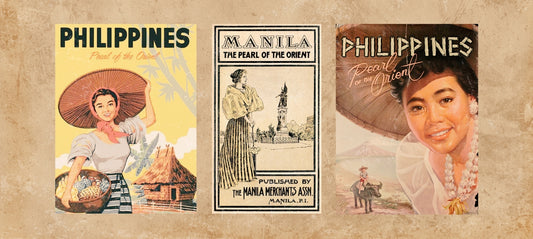By Ruby Veridiano, Guest Writer for VINTA Gallery
Fashion has always been the lens in which I saw the world. Growing up with a fashion-forward Filipino mother who inherited the elegance of her mother (my grandmother), I was brought up with an inherent understanding of the power of dressing well. From a young age, I learned that dressing with intention wasn’t just about vanity, but rather, a way to assert my sovereignty: a way to respect, care and adorn myself as I navigated the world as a fashion writer & storyteller.
Despite my parents’ humble beginnings as working class immigrants, having nice clothes was never something that was compromised in our household. In fact, my mom’s sense of personal style was a hallmark of my childhood upbringing. My mom showed me how to make secondhand store finds look and feel like a million dollars, and it gave me confidence as a young person who was learning how to find her voice in a new country. In many ways, fashion outfitted my sense of identity & belonging as an American.
So when I learned about the history of Filipino-American farm workers using fashion to take up space and reclaim their dignity, it touched me with a profound resonance.
In the 1920s and 1930s, a wave of Filipino migrants arrived in the United States in response to a demand for labor. Known as the ‘Manong Generation’ (Manong is an Ilocano term that means older brother), many of them filled the labor supply that the agricultural industry needed. As the Oakland Museum of California describes, “During the last quarter of the 19th century, California had quickly become the vegetable and fruit basket of America.”
Thus, Filipino workers ended up in farms where they were often designated as “stoop labor”, requiring workers to bend down for 10 hours or more to plant or weed. In addition to the backbreaking work, living and working conditions on the farm were demeaning. They earned low wages, had little to no protection from heat and pesticides, and they lived in crowded, unsanitary living quarters that did not provide adequate toilets or reliable drinking water. On top of that, they experienced violent racism. “The cheap farm labor needed to make California agriculture so immensely profitable came largely from Asian contract labor. Working class Whites felt threatened by these new immigrants,” [Source: Oakland Museum of California].
Despite these realities, I was impressed to learn that during their days off, Manongs donned the finest bespoke suits, and carried themselves like movie stars.
To set the scene, the McIntosh suit was a coveted item during that era. With suits made from fine silks and high-quality wool, the McIntosh studio was the designated tailor for Hollywood royalty. While their clientele often came from affluent backgrounds, the Manongs also made up a small part of their customer base. However, even if they weren’t wearing an official MacIntosh suit, their dress reflected this aspirational aesthetic.

As writer Joshua Bote writes on SFGate, “The suits were worn as a small act of defiance, as if to steal a little taste of American luxury, to lay a tiny stake to the privilege of white, upward mobility in America…handsome men, dressed to the nines, became representatives of a dream to be realized in the country that colonized them.”

With their hair neatly slicked back and their suits impeccably styled, Manongs showed up on their days off at social clubs with their heads held high. However, during one of these nights off, Filipino men were seen dancing with White women at a local dance hall, sparking a mob attack that involved 500 armed men.
This became known as the ‘Watsonville Riots’ on January 19, 1930.
During the Watsonville Riots, hundreds of white men armed with pistols & clubs terrorized Filipino-American men for five days. Weeks before the riots, anti-Filipino rhetoric was ramping up in the local community of Watsonville in response to the growing resentment towards Filipinos for “stealing jobs” during the Great Depression (even though they were doing the jobs that white laborers refused to do). [Source: FANHS] Additionally, they were also viewed as sexual competition, disdained for their ‘audacity’ to socialize with White women.

The riot resulted in the death of Fermin Tobera, who was hiding inside a closet with other Filipinos when a rioter fired shots at the side of the bunkhouse. No one was charged for the crime. After the riots ended, the violence began to spread to other towns.
Ten days later, on January 29, 1930, the Filipino Federation of America Building in Stockton was bombed. One person was injured in the attack.
What is deeply moving about this event is the Filipino community’s response. Knowing they could not retaliate to the violence, they instead took a photo in front of the building, dressed in their finest garments.

As writer and executive producer of “Larry the Musical: An American Journey” Gayle Romasanta states, “They knew that if they retaliated, they would be seen as animals, and that would jeopardize the Philippines [gaining their] independence from the United States. So they took that photo - that was the only option at the time. And it has occurred to me in writing [Larry the Musical] that they did it to show everyone they couldn't kill us. That we weren't going anywhere.”
Looking at this photo, I get emotional. When I look into it, I see my forefathers using fashion as a form of resistance. Instead of responding with violence, they used the power of dress to demonstrate not only their humanity, but to assert their dignity. They put on their best dress as an act of honor.
During the time of the Watsonville Riots, a fedora hat wearing, fiery teenager by the name of Larry Itliong would begin seeding his foundations as one of the most important labor union organizers and civil rights activists in American history. Arriving on US soil at age 15, he quickly became a community organizer. By the time he became more well-known in the 1960s for spearheading the historic Delano Grape Strike alongside Cesar Chavez and Dolores Huerta, he already had over 35 years of organizing experience under his belt. As Romasanta asserts, “He had more labor experience than both Dolores and Cesar when [he became more visible] in 1965. All of the labor leaders knew this — even the white leaders — that the only person who could unite everyone on grapes was Larry.”
Unfortunately, despite the fact that the Delano Grape Strike is one of the most pivotal labor movements in American history, Larry did not get the same recognition as his counterpart, Cesar Chavez.

But earlier this year, in 2024, Larry finally got his well-deserved spotlight in "Larry the Musical: An American Journey”. Nearly 50 years after his death in 1977, the heroic story of Larry and his fellow well-dressed Manongs took center stage, their voices speaking through the performances of an all Filipino-American cast. Based on the book Journey for Justice written by the late Filipino-American historian Dr. Dawn Mabalon and Gayle Romasanta, the musical production covers Itliong’s life, from his birth to his death.
As we relive Larry’s life through photos and the stage, his fedora hat stands out as an iconic symbol of his presence. Though it was likely worn for the practical benefit of shielding his face from the harsh heat of the sun, the fedora hat is also a remnant of the Manongs’ sartorial heritage: a bold and brave statement by Filipino gentlemen to remind the world of their dignity.
As a Filipina-American working in fashion, learning this important piece of fashion history feels like a divine inheritance, an heirloom that we must pass on to remind us that belonging and justice is our birthright. As my forefathers demonstrated, fashion has the power to equip us with the visual language to communicate how we want to be addressed — with respect and nobility. When paired with intentionality, fashion has the power to immortalize a legacy.
Learn more about Larry the Musical here: https://www.larrythemusical.com/
--- ---
Ruby Veridiano is a fashion storyteller & educator whose mission is to spread awareness about sustainable fashion and to activate conscious leadership in the fashion industry. Her writings have appeared on NBC News, NYLON Magazine and Mic.com, and she has interviewed designers Anna Sui, Vivienne Tam and Prabal Gurung, among other multicultural designers in the fashion industry. She has also been a blogger for Alicia Keys and an on-camera talent for ABS-CBN Television. Despite coming from humble beginnings as an immigrant daughter raised in Sacramento, California, she created study and work opportunities to live in places like Italy, the Philippines, the Bay Area, New York City and Paris, France; thus, feeding her desire to motivate others to dream big. Globally minded and multilingual, she speaks English, Tagalog and French. https://www.rubyveridiano.com/








